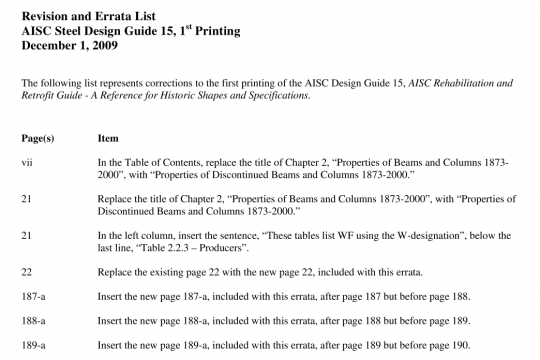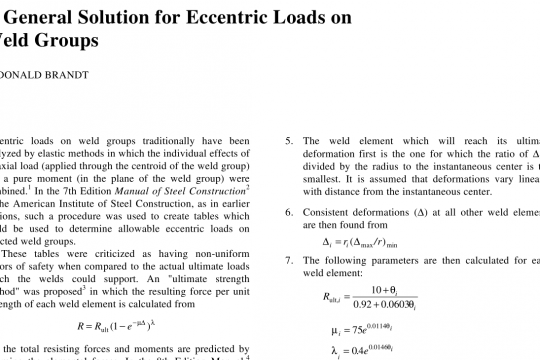Steel Tips AISC RBS pdf free download
Steel Tips AISC RBS pdf free download.Design of Reduced Beam Section (RBS) Moment Frame Connections.
A SMF lateral force resisting system is often preferred by building owners and architects because this type of system provides large unobstructed spaces throughout the building plan. This “open” layout offers the most flexibility for programming the spaces as well as architectural appointments. For these reasons, steel buildings with SMF systems are quite common in major commercial and institutional structures. Furthermore, the SMF system is considered by many to be one of the most ductile steel building systems available to the engineer. For this reason, SMF systems have been widely used in areas of high seismicity.
SMFs are typically comprised of connections between wide flange beams and columns where beam flanges are welded to column flanges utilizing complete joint penetration welds. Figure 1.1 shows a typical unreinforced design detail for a beam-to-column connection used in SMF systems prior to the 1994 Northridge earthquake. Common practice prior to the Northridge earthquake was to either bolt or weld the web to the column shear plate, and to weld the beam flanges to the column flange using a complete joint penetration groove weld. Historically, designers have assumed that beam shear is transferred to the column by the beam web connection and the moment is transferred through the beam flanges.
In the design of SMF connections, the engineer must set objectives for both load and deformation capacities. Usually, the load capacity requirement is based on the plastic moment of the beam. The connection must be strong enough to develop the strength of the beam, thus reducing the risk of brittle failure in the connection. Inelastic deformation capacity is required to assure ductility in predetermined locations when subjected to large deformation demands.
After some of the problems observed in SMF connections after the Northridge earthquake, a common philosophy has been to design the connection to remain nominally elastic at the column face, and force the inelastic deformation of the frame to occur in a portion of the beam, away from the connection. This philosophy is executed by using a “capacity design” approach. The plastic moment and associated shear of the beam is based on probable strengths of materials. These maximums then become the design loads for the connection. The connection of the beam to the column flange is then designed using nominal material properties.
Another type of connection developed to force the inelastic deformation away from the beam-column interface is referred to as a “Reduced Beam Section” connection (RBS) or “dogbone”. This connection relies on the selective removal of beam flange material adjacent to the beam-to-column connection, typically from both top and bottom flanges, to reduce the cross sectional area of the beam. This reduction in cross sectional area will reduce the moment capacity at a discrete location in the beam. Various shapes of cutouts are possible, including constant cut, tapered cut radius cut and others. Figure 1.2 illustrates a radius cut RBS connection. Steel Tips AISC RBS pdf download.




